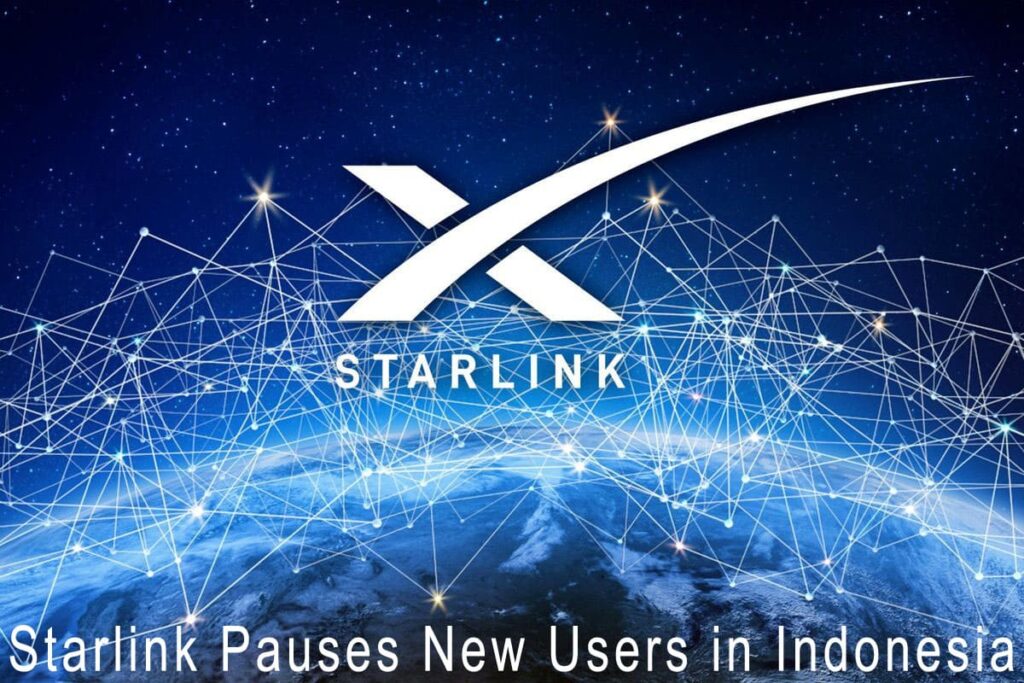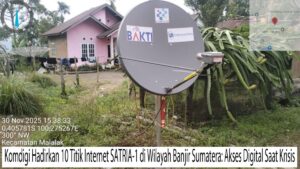Starlink Pauses New Users in Indonesia – In Indonesia, Starlink has formally suspended the registration of new users. The move has raised a lot of eyebrows—especially among telecom industry players, government regulators, and users in remote regions who’ve been relying heavily on this low-Earth orbit (LEO) satellite service for internet access.
But behind the brief explanation of “sold-out capacity,” there’s a lot more going on technically and policy-wise. This article breaks it all down for those who want more than just the headlines.
Starlink Pauses New Users in Indonesia: What It Means, the Technical Reason, and What’s Next
So, What’s Actually Happening?
As of July 13, 2025, Starlink updated its ordering page for Indonesia. New users are no longer able to purchase hardware and activate service directly. Instead, they’re met with a “Join Waitlist” option. To get in line, users are asked to put down a deposit of Rp750,000 (around $45–50 USD).
According to Starlink, this change is the consequence of the enormous demand in the area. “We are currently experiencing extremely high demand, and the available capacity in your area has been fully utilized,” the company states on its website.
What Does “Capacity Sold Out” Mean for Satellite Internet?
Unlike fiber or mobile networks, where scaling is relatively straightforward, satellite internet has hard technical limits. Starlink’s service is delivered via a constellation of LEO satellites, each of which can only handle a finite number of concurrent users in a given area.
As of mid-2025, less than 200 Starlink satellites are regularly passing over Indonesia at any one time. That limited number means only so much bandwidth is available—especially as demand spikes from rural and underserved regions across the archipelago.
What’s Starlink’s Legal Status in Indonesia?
Starlink operates in Indonesia through a locally registered entity called PT Starlink Services Indonesia (SSI), which has secured several key licenses from the Ministry of Communication and Informatics (Kominfo), including:
- License for VSAT (Very Small Aperture Terminal)
- ISP License (Internet Service Provider)
- ULO license for using foreign satellites
They’ve also partnered with PT Primacom Interbuana as an official enterprise distributor. For residential users, though, most transactions are still done directly through Starlink’s global website.
Who’s Most Affected?
This pause in new activations will mainly impact:
- Households in remote areas who planned to sign up but now have to wait indefinitely.
- Local governments and rural schools that were about to roll out Starlink-based connectivity.
- Small ISPs and local resellers, who may face disruptions if they rely on Starlink stock or bandwidth allocations.
On the flip side, existing Starlink users are unaffected and can continue using the service as usual.
Can Capacity Be Increased?
Yes—but it’ll take some time. In Indonesia, Starlink has two primary avenues for growth:
- Launching more satellites in equatorial orbits – Starlink has mentioned plans to boost its presence in Southeast Asia, but these launches take time and require regulatory clearance.
- Building local ground gateways – These would improve capacity and reduce latency, but again, this requires partnerships and infrastructure development within Indonesia.
A Golden Window for Local Players?
This development may offer a golden opportunity for local VSAT providers, rural fiber operators, and fixed wireless players to reach out to users who are now stuck on Starlink’s waitlist.
That said, price and distribution still pose significant barriers, especially for rural households with limited budgets.
What Should New Users Do Now?
If you were planning to subscribe to Starlink:
- Go ahead and place a deposit on the official website to secure your spot in the waitlist.
- Save your confirmation email—it’s your ticket for when capacity opens up.
- Keep an eye on your inbox. Starlink hasn’t shared a clear timeline, so users will be notified individually.
Final Thoughts
Starlink’s decision to pause new registrations in Indonesia isn’t about regulation or politics—it’s purely a technical limitation in satellite capacity. While frustrating for some, this situation also highlights a bigger picture: demand for satellite internet in Indonesia is exploding.
For telecom stakeholders and policy analysts, now is the time to rethink long-term strategies. That includes whether Indonesia should push for more satellite gateways, issue additional licenses, or encourage hybrid models with public-private partnerships.





